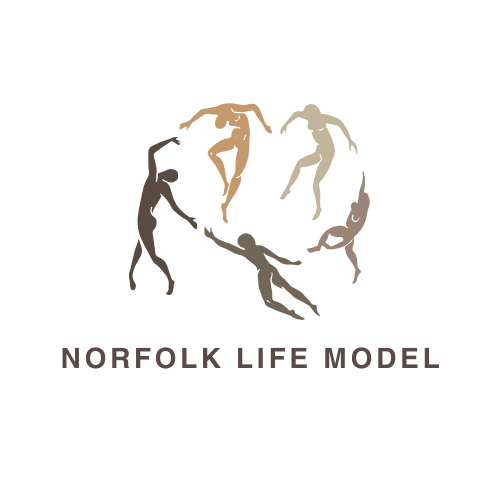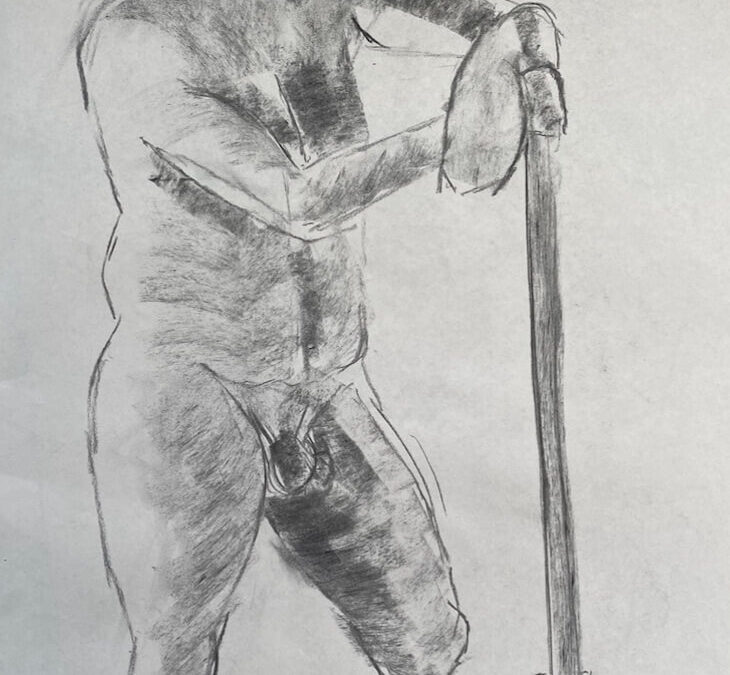A Day in the Life of a Life Drawing Model
Ever wondered about life modelling? This comprehensive guide reveals the realities of posing for life drawing classes, from first-time experiences to professional insights. Perfect for those considering this unique role in art and design.
How Does A Typical Life Drawing Class Begin?
The tutor introduces the model to the group and outlines the session’s structure. Models start with shorter, gestural poses before moving to longer poses.
First-time models often feel nervous about posing in front of a group of strangers, but professional environments help ease these concerns.
What Should Models Expect In The Life Room?
Life rooms typically feature a central platform for the model, surrounded by artists’ easels. Good lighting and temperature control help maintain comfort during long periods.
Models should bring a robe and consider comfortable positions for staying still.
How Do You Handle Standing Poses?
Standing poses require careful consideration of balance and stability. Models learn to distribute their weight evenly to maintain positions.
The tutor may suggest pose adjustments to take into consideration both artistic value and model comfort.
What Makes Life Drawing Different From Still Life?
Unlike drawing a bowl of fruit, life models create dynamic, living compositions. The human form offers endless possibilities for shapes and forms.
Artists who draw from life develop deeper understanding of anatomy and movement.
How Do Royal Academy Standards Influence Classes?
The Royal Academy’s traditions have shaped life drawing practices across the UK. Their methods emphasise both technical skill and artistic expression.
Many life drawing workshops still follow similar structures to those established by the Royal Academy of Arts.
What Materials Do Artists Use?
Artists typically work with traditional materials like pencil and charcoal. Each medium captures different aspects of the pose.
The choice of materials affects how artists interpret the model’s form and presence.
How Long Do Poses Last?
Sessions usually begin with quick poses lasting 1-5 minutes. These warm up both model and artists.
Longer poses can extend to several hours, with regular breaks for model comfort.
What About Nudity Concerns?
Professional life drawing focuses on artistic study rather than nudity. The atmosphere remains respectful and focused.
New models often realise their initial concerns about posing nude diminish quickly in the professional environment.
How Can You Start Life Modelling?
Begin by contacting local life drawing groups or art schools. Many welcome new models with an interest in art.
Building experience starts with shorter sessions before progressing to longer workshops.
What Makes A Successful Life Model?
Successful models combine physical stamina with creative pose ideas. They understand how to create interesting compositions for artists.
Professional models develop strong communication with tutors and maintain consistent reliability.
Key Points to Remember:
- Preparation is essential
- Start with shorter poses
- Maintain professional boundaries
- Bring a robe
- Communicate with tutors
- Consider comfort in poses
- Regular breaks are important
- Build experience gradually
- Focus on artistic contribution
- Develop pose repertoire
Frequently Asked Questions
Q: What’s it like to be a nude life drawing model in front of a group of strangers?
A: It can be a bit nerve-wracking at first, but once you get into the groove, it’s pretty liberating! You’re there to help budding young artists with their figure drawing, and it’s cool to see how they interpret you into their works of art.
Q: Do I have to be nude for every life drawing workshop?
A: Not necessarily! While many life classes feature nude models to study anatomy, some workshops may allow for clothed modelling. Just check the workshop details beforehand to know what to expect!
Q: How long do I have to stay still during a session?
A: You’ll typically have to hold poses for long periods of time, which can range anywhere from a couple of minutes to around 20 minutes. It’s all about finding your comfort zone and pacing yourself!
Q: What if I’m new to drawing and want to join a life drawing session?
A: No worries! Life drawing workshops are great for all skill levels. If you’re new to drawing, just let the instructor know, and they’ll help you get the most out of the experience!
Q: Are there any tips for staying still as a life drawing model?
A: Definitely! It helps to practice your poses before the class and focus on your breathing. Also, finding a comfortable position where you can relax will make those long periods of time a lot easier!
Q: What kind of materials do artists typically use during figure drawing sessions?
A: Artists often use a mix of pencils and charcoal. These materials allow for great flexibility and can help capture the nuances of your form in their works of art!
Q: How does it feel to see the drawings created of you?
A: It’s super exciting! Seeing how different artists interpret you can be very rewarding. Some may make you feel like a work of art yourself, and it’s interesting to see the variety in styles and techniques!
Q: Can I become a life drawing model if I’ve never done it before?
A: Absolutely! Many models start with little to no experience. Just be open to learning and communicating with the artists and the workshop leader. Being a life drawing model is as much about enjoying the process as it is about the final product!
Q: What’s the best way to prepare for my first life drawing class?
A: Just relax and be yourself! If you have any questions or concerns, don’t hesitate to ask the instructor. It’s also good to practice poses beforehand to help ease your mind when you’re in front of a group for the first time!
Check out online life drawing classes here.
Read about my first life modelling experience here

